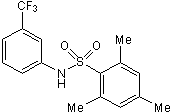PLC-beta 4 Products
Phosphoinositide-specific Phospholipase C (PLC) is an essential signal transduction molecule that catalyzes the hydrolysis of the cellular membrane phospholipid Phosphatidylinositol 4,5-bisphosphate (PIP2) to generate the second messengers Inositol 1,4,5-trisphosphate (IP3) and Diacylglycerol (DAG). IP3 and DAG then initiate the release of calcium from intracellular stores and the activation of Protein Kinase C, respectively. Currently, thirteen PLC isozymes have been identified and are divided into six PLC subfamilies: PLC-beta, -delta, -epsilon, -eta, -gamma, and –zeta. All PLC isozymes are multi-domain molecules that contain several conserved structural features. These features include the catalytic X and Y domains, EF hand calcium-binding motifs, and an N-terminal pleckstrin homology (PH) and a C-terminal C2 domain, both of which function as membrane-phospholipid binding regions. The PLC-beta subfamily also contains an extra 450 amino acids (aa) in the C-terminus that are thought to be critical for association with G proteins.
PLC-beta 4 is one member of the PLC-beta subfamily. It is 1175 aa in length with a predicted molecular weight of 134.5 kDa. Human PLC-beta 4 shares 98% aa sequence identity with the mouse and rat orthologs. This protein is widely expressed with the highest expression levels being found in the brain and retina. PLC-beta 4 is activated by the alpha subunit of Gq/11 proteins; however, unlike other PLC-beta isozymes, it is unresponsive to G protein beta-gamma subunits. This protein has been shown to be critical for synaptic pruning in the developing cerebellum, and a lack of PLC-beta 4 expression is associated with ataxia. PLC-beta 4 has also been shown to play a role in circadian-regulated physiological processes.
5 results for "PLC-beta 4" in Products
5 results for "PLC-beta 4" in Products
PLC-beta 4 Products
Phosphoinositide-specific Phospholipase C (PLC) is an essential signal transduction molecule that catalyzes the hydrolysis of the cellular membrane phospholipid Phosphatidylinositol 4,5-bisphosphate (PIP2) to generate the second messengers Inositol 1,4,5-trisphosphate (IP3) and Diacylglycerol (DAG). IP3 and DAG then initiate the release of calcium from intracellular stores and the activation of Protein Kinase C, respectively. Currently, thirteen PLC isozymes have been identified and are divided into six PLC subfamilies: PLC-beta, -delta, -epsilon, -eta, -gamma, and –zeta. All PLC isozymes are multi-domain molecules that contain several conserved structural features. These features include the catalytic X and Y domains, EF hand calcium-binding motifs, and an N-terminal pleckstrin homology (PH) and a C-terminal C2 domain, both of which function as membrane-phospholipid binding regions. The PLC-beta subfamily also contains an extra 450 amino acids (aa) in the C-terminus that are thought to be critical for association with G proteins.
PLC-beta 4 is one member of the PLC-beta subfamily. It is 1175 aa in length with a predicted molecular weight of 134.5 kDa. Human PLC-beta 4 shares 98% aa sequence identity with the mouse and rat orthologs. This protein is widely expressed with the highest expression levels being found in the brain and retina. PLC-beta 4 is activated by the alpha subunit of Gq/11 proteins; however, unlike other PLC-beta isozymes, it is unresponsive to G protein beta-gamma subunits. This protein has been shown to be critical for synaptic pruning in the developing cerebellum, and a lack of PLC-beta 4 expression is associated with ataxia. PLC-beta 4 has also been shown to play a role in circadian-regulated physiological processes.
| Reactivity: | Human, Mouse, Rat |
| Details: | Goat IgG Polyclonal |
| Applications: | WB |
| Reactivity: | Human |
| Details: | Rabbit IgG Polyclonal |
| Applications: | IHC, ICC/IF |
| Reactivity: | Human, Mouse, Rat |
| Details: | Rabbit Polyclonal |
| Applications: | WB |
| Applications: | AC |
Phospholipase C activator
| Chemical Name: | 2,4,6-Trimethyl-N-[3-(trifluoromethyl)phenyl]benzenesulfonamide |
| Purity: | ≥98% (HPLC) |



![Immunocytochemistry/ Immunofluorescence: PLC-beta 4 Antibody [NBP2-58912] Immunocytochemistry/ Immunofluorescence: PLC-beta 4 Antibody [NBP2-58912]](https://resources.bio-techne.com/images/products/PLC-beta-4-Antibody-Immunocytochemistry-Immunofluorescence-NBP2-58912-img0001.jpg)
![Western Blot: PLC-beta 4 Antibody [NBP3-41343] - PLC-beta 4 Antibody](https://resources.bio-techne.com/images/products/nbp3-41343_rabbit-plc-beta-4-pab-61220242116241.jpg)

